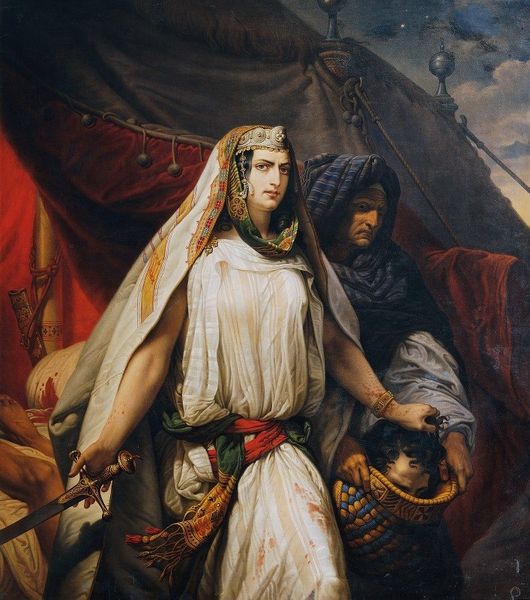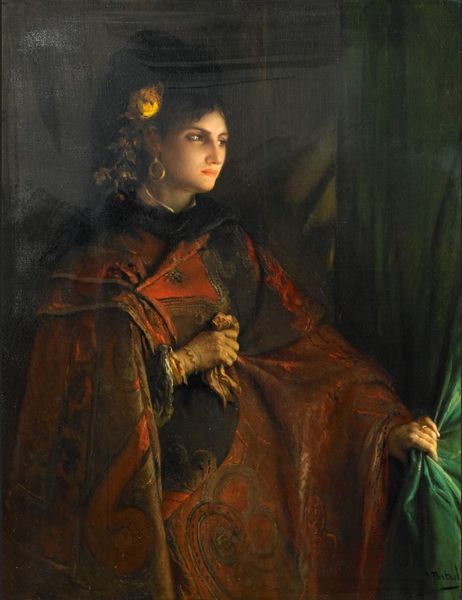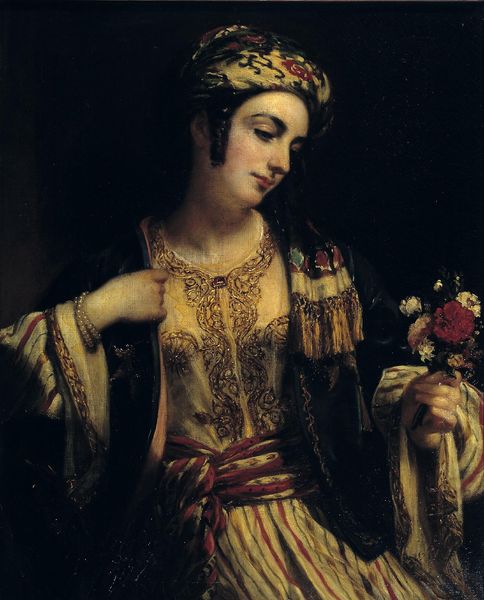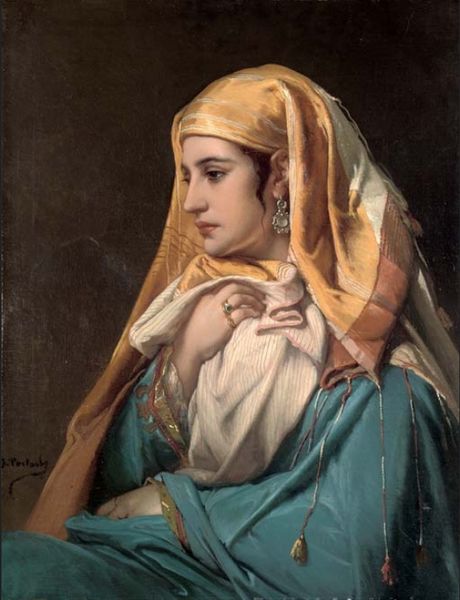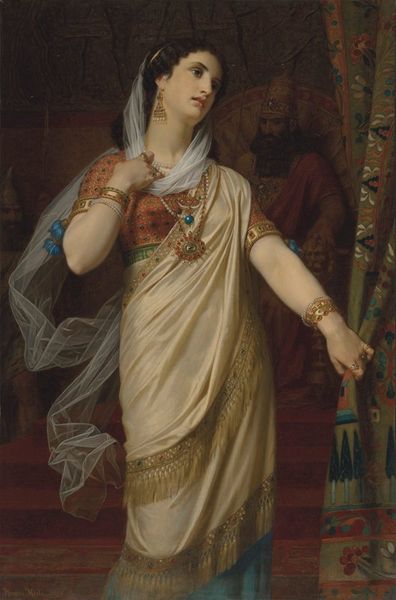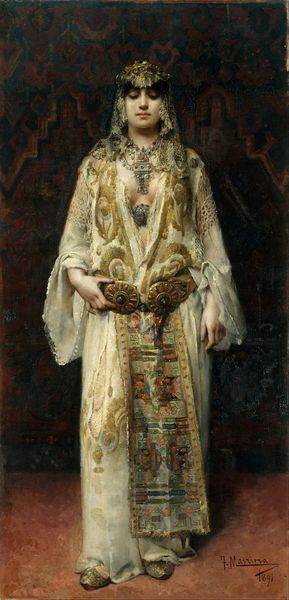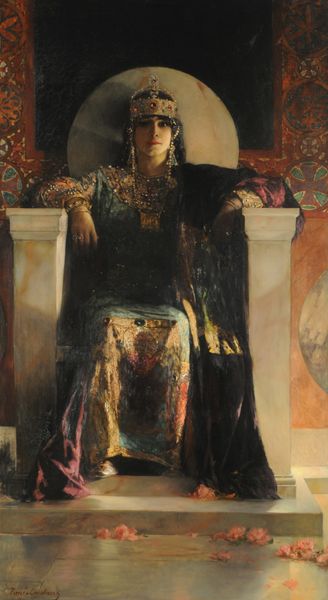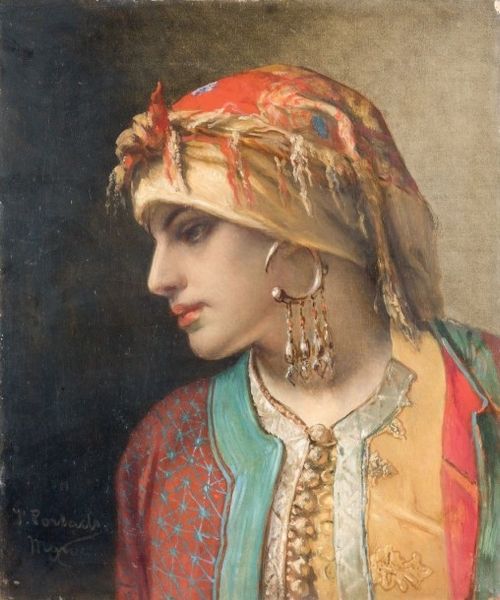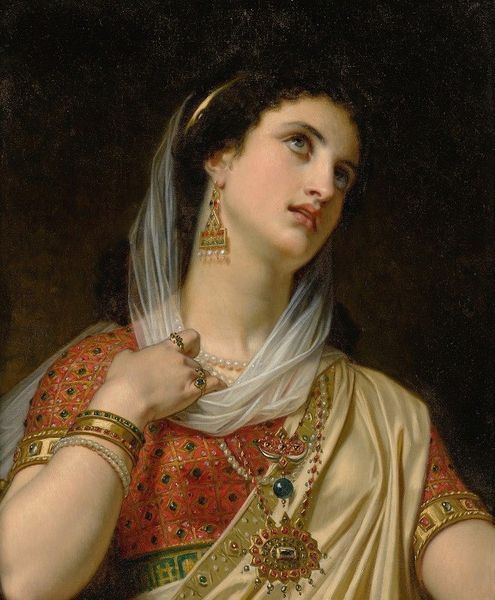
Copyright: Public domain
Editor: Here we have Jean-François Portaels’ "Esther" from 1869, rendered in oil paint. What strikes me is her gaze – so direct, but there's a sense of melancholy there too. What's your take on it? Curator: Melancholy is a brilliant observation! Her stillness suggests introspection. Given the context, Portaels was an orientalist painter, part of that 19th-century fascination with the "East," but unlike some, he strived for nuance. Look closely at her clothing – the detail isn't just about lavishness. What might it communicate about power or perhaps, confinement? Editor: I hadn’t thought of confinement, but I see what you mean. All those layers, and the almost mask-like headdress, they could suggest she's performing a role. Curator: Exactly. The historical Esther used her position strategically, bravely. Do you sense that strength beneath the surface in Portaels’ interpretation? Or is she a romanticized victim? I always grapple with that duality in these portrayals. Editor: Hmmm… it’s subtle, but I think the strength is there, in her unflinching eyes. It makes me question the whole ‘victim’ narrative. Curator: Precisely! And that's the beauty of engaging with art like this – it holds up a mirror to our own assumptions about history, gender, and representation. I come away from this pondering the burdens that even queens shoulder. What about you? Editor: For me, I see now that historical paintings can challenge what we thought we knew. Thanks, I will have a lot to think about!
Comments
No comments
Be the first to comment and join the conversation on the ultimate creative platform.


